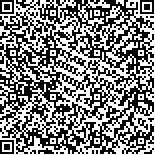| 摘要: |
| 对东海陆架69个表层沉积物样品进行了环境磁学测试,并结合重矿物鉴定和粒度分析数据讨论了其磁学特征、影响因素和物源指示意义。结果表明研究区表层沉积物中磁性矿物以磁铁矿为主,同时含有少量的磁赤铁矿和赤铁矿。这一结果与碎屑矿物镜下鉴定结果一致。根据磁学参数 S-300 (-300mT磁场下饱和等温剩磁的矫顽参数)、SIRM /χ(饱和等温剩磁与磁化率之比)及SIRM(饱和等温剩磁),将东海陆架表层沉积物分为三类。第一类沉积物主要分布在西部内陆架及研究区东北部的细粒沉积区,磁性矿物含量较高,亚铁磁性矿物所占比例较小,磁性矿物颗粒细;第二类分布在中外陆架,磁性矿物含量低,亚铁磁性矿物比例相对较高,磁性矿物颗粒粗;第三类沉积物分布在研究区东部部分站位,磁性矿物含量高,亚铁磁性矿物含量也高,磁性矿物颗粒粗。沉积物整体的粒度粗细控制了磁性矿物颗粒的大小,且在以现代细粒沉积物为主的第一类沉积物中,磁性矿物含量与粉砂、黏土含量成正相关关系。 S-100 -SIRM(-100mT磁场下饱和等温剩磁的矫顽参数-饱和等温剩磁)散点图显示,东海陆架大部分区域沉积物磁学特征与长江沉积物一致,表明物质来源于长江;研究区东北部受到黄海沿岸流搬运来的黄河物质的影响磁学性质呈现出黄河物质特征;闽浙沿岸部分站位受到人类活动及瓯江物质的影响。 |
| 关键词: 东海陆架 表层沉积物 磁学特征 物源 |
| DOI:10.11693/hyhz20160900194 |
| 分类号: |
| 基金项目:国家自然科学基金重点项目,41430965号;国家自然科学基金青年项目,41506060号。 |
附件 |
|
| MAGNETIC PROPERTY OF THE EAST CHINA SEA SEDIMENT: INDICATION TO THE PROVENANCE |
|
ZHANG Kai-Di1,2, LI An-Chun1, LU Jian1, ZHANG Jin1,2
|
|
1.Key Laboratory of Marine Geology and Environment, Institute of Oceanology, Chinese Academy of Sciences, Qingdao 266071, China;2.University of Chinese Academy of Sciences, Beijing 100049, China
|
| Abstract: |
| To identify the provenance of sediments in the East China Sea continental shelf, multiple magnetic parameters, sediment grain size, and detrital mineral compositions were measured from surface sediments collected in 69 sites. The susceptibility (χ), saturation isothermal remanent magnetization (SIRM), S ratio, and κ-T curve of typical samples show that the magnetic mineralogy is dominated by magnetite with a small amount of hematite and ilmenite, which is consistent with the results of detrital minerals identification under the microscope. Magnetic parameters (frequency-dependent magnetic susceptibility (χfd%), χARM, χARM/χ and χARM/SIRM) suggested that the magnetic mineral particles are finer in the west of the study area. In the southwest Jeju Island sediments are dominated by single-domain and pseudo-single-domain particle with relatively high concentration of super-paramagnetic particles. While in the middle-outer continental shelf the magnetic mineral particles are dominated by pseudo-single-domain and multi-domain particles. In terms of magnetic parameters S-300, SIRM/χ, and SIRM, the surface sediments can be divided into three types. Type 1 sediments are mainly distributed in the western part of the continental shelf and the northeastern part of the study area. It mainly consists of modern fine grained sediments with high magnetic mineral content, and the magnetic mineral content is positively correlated with silt and clay content. Type 2 sediments are distributed in the middle-outer continental shelf and dominated by coarse relict sediments in low magnetic mineral content and show no significant correlation between the magnetic mineral content and grain size. Sediments in Type 3 are distributed in the eastern part of the study area with high magnetic mineral content and coarse grain size. To a certain extent, the grain size of the magnetic mineral particles is controlled by sediment particles, and the correlation between the content of magnetic minerals and the grain size is different among the three types. The magnetic properties of the samples reflect three major provenances as discriminated in S-100 vs. SIRM diagrams in comparison with available studies concerned:the Changjiang (Yangtze) River for most sites, Huanghe (Yellow) River for the northeastern sites, transported by the Yellow Sea coastal current, and Zhejiang-Fujian coastal area in some sites affected by human activities and Oujiang River input. |
| Key words: East China Sea continental shelf surface sediments magnetic property sediment provenance |
